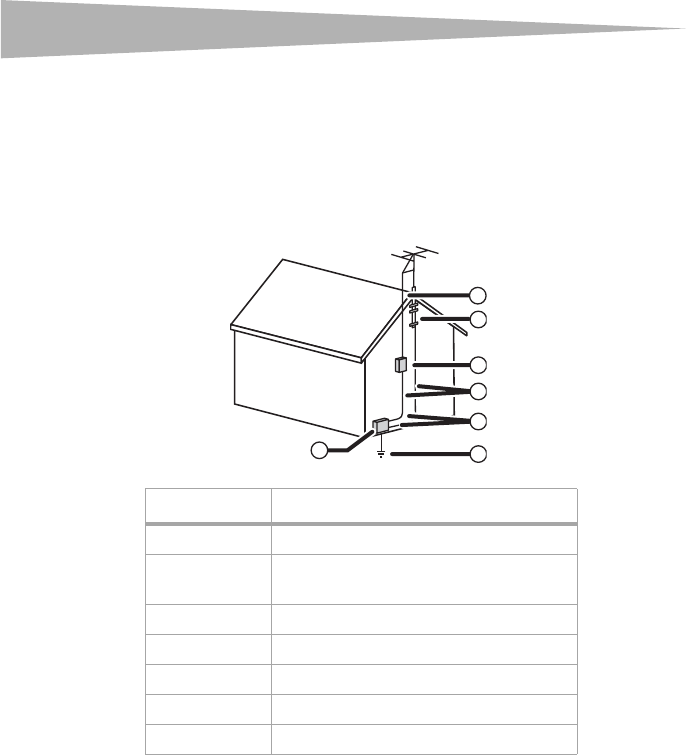
4
Safety information
• Follow all warnings and instructions marked on the television.
• If an outside antenna or cable system is connected to the television, be sure the
antenna or cable system is grounded so as to provide some protection against voltage
surges and built-up static charges. Article 810 of the National Electrical Code, ANSI/
NFPA 70, provides information with regard to proper grounding of the mast and
supporting structure, grounding of the lead-in wire to an antenna discharge unit, size
of grounding conductors, location of antenna-discharge unit, connection to grounding
electrodes, and requirements for the grounding electrode.
• Use No. 10 AWG (5.3 mm
2
) copper, No. 8 AWG (8.4 mm
2
) aluminum, No. 17 AWG
(1.0 mm
2
) copper-clad steel or bronze wire, or larger, as a ground wire.
• Secure antenna lead-in and ground wires to house with stand-off insulators spaced
from 4-6 feet (1.22 -1.83 m) apart.
• Mount antenna discharge unit as close as possible to where lead-in enters house.
• Use jumper wire not smaller than No. 6 AWG (13.3 mm
2
) copper, or the equivalent,
when a separate antenna-grounding electrode is used. See ANSI/NFPA70.
• An outside antenna system should not be located in the vicinity of overhead power
circuits, or where it can fall into such power lines or circuits. When installing an outside
antenna system, extreme care should be taken to keep from touching such power lines
or circuits as contact with them might be fatal.
Reference Grounding component
1 Electric service equipment
2 Power service grounding electrode system
(NEC Art 250, Part H)
3Ground clamp
4 Grounding conductors (NEC Section 810-21)
5 Antenna discharge unit (NEC Section 810-20)
6Ground clamp
7 Antenna lead-in wire
6
7
5
2
1
3
4


















